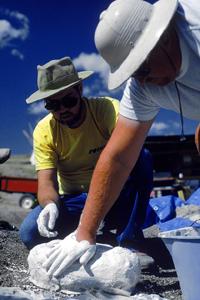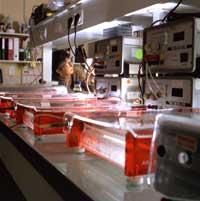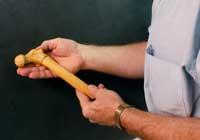Beware, don't spoil the fossils

In many cases, work is done in deposits according to the needs and normally no measures are taken to avoid the contamination of the fossils. (Photo P. Olmert, NSF)
The laboratory paleontologist must perform miracles to extract the genetic material from a fossil, especially if it has received this conventional treatment. However, it has been possible to study the genetic material of many prehistoric fossils: the mammoth, the bear of the cave, the man of Neanderthal... to cite some. So imagine what would be achieved if the fossils were treated differently, in a way specially designed for the conservation of genetic material.
From the site to the laboratory
The study of genetic material has been a major breakthrough in paleontology. For this reason, we want to make the most of this resource and we are asking for and asking that the fossils be collected properly.
To preserve the genetic material of a fossil, it is not good to remove the soil attached to the fossil, and it is recommended to freeze it as soon as possible. In fact, the fossil has remained in the same medium for thousands of years, almost at the same temperature. But when leaving this environment, often the fossil passes into a warmer environment and its genetic material deteriorates.

The analysis of the genetic material of a fossil, i.e., DNA, requires the maximum of material. (Photo: FMC Corporation)
In addition, it is advisable not to contaminate the fossil's genetic material, either with the current one (for example, with the field staff) or with other fossils. In many deposits, once collected the fossils, it proceeds to their joint cleaning with water. Consequently, the material containing a fossil can be extracted and transferred from one fossil to another (the bone, for example, is a very porous material that is easily accessed from the outside).
Therefore, it is advisable not to clean up the fossils. And those who have direct contact with the fossils should wear protective suits: gloves, apron, etc. In short, they should use measures similar to those used in the laboratory at the site to avoid the contamination of the fossils.
Significant difference in difference
During the last centuries, the traditional method of collecting fossils and traces has been useful, since it was mainly focused on the shape of the fossil. And it must be recognized that, although not appropriate, the fossils collected in the museums have been used to analyze ancient DNA. But it is clear that the new technique is more adequate and gives better results.

Fossil bones are porous so they are relatively easy to contaminate with external materials. (Photo G. Grieco, Penn State)
Paleontologists of the Jacques Monod Institute of Paris compare the results between the traditional collection of fossils and that made in a more sterile environment. For this purpose, fossils collected in two different periods, from a species of missing cattle, have been used. The fossils are bones of the same grain: one of them was collected in 1947 and has been in the museum, and the other was collected in 2004 taking measures for the conservation of genetic material, conserving it until now at -20ºC.
Well, the fossil that has been in the museum could not extract genetic material. Of all the other fossils. Therefore, the difference between both methods is evident. And although the intuition itself also mandated it, there is now clear evidence to say that fossils should be collected as sterile as possible.
Published in 7K.
Buletina
Bidali zure helbide elektronikoa eta jaso asteroko buletina zure sarrera-ontzian











